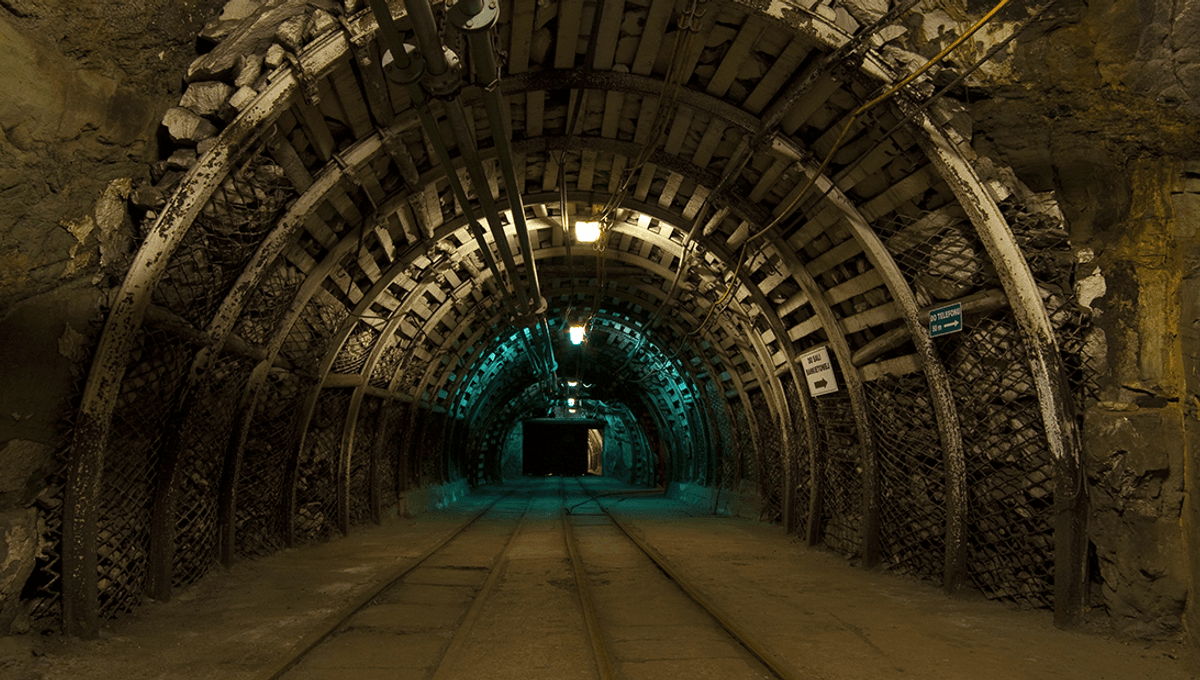As far as astronomers studying the observable universe can tell, only around 5 percent of it is made up of matter. The rest, or the overwhelming majority of it, is made up of dark matter (around 27 percent) and dark energy (around 68 percent).
Dark matter is invisible matter that doesn’t emit its own light and only interacts with normal matter through gravity, which we can see evidence for in galaxies and galaxy clusters. But given that there appears to be five times as much of it as regular matter, scientists are of course on the hunt for direct evidence of its existence.
One approach to finding it, maybe counterintuitively as dark matter explains what we see in the stars and galaxies, is to head underground.
There are several underground facilities around the world where physicists look for signs of Weakly Interacting Massive Particles (WIMPs), among other things such as measuring impacts of neutrinos. The idea is that the WIMPs must be passing through the Earth all the time as it moves through space, so to detect them we simply need detectors sensitive enough to capture those weak interactions.
“In [the Stanford LUX-ZEPLIN experiment], two massive electrical grids apply an electric field across the volume of liquid, which pushes these released electrons to the liquid’s surface,” Hugh Lippincott, Associate Professor of Physics at the University of California, Santa Barbara, explained in a piece for The Conversation.
“When they breach the surface, they are pulled into the space above the liquid, which is filled with xenon gas, and accelerated by another electric field to create a second flash of light. Two large arrays of light sensors collect these two flashes of light, and together they allow researchers to reconstruct the position, energy and type of interaction that took place.”
These detectors are impressive, and even if they don’t find out what dark matter is, they can help constrain what it isn’t. The problem, however, is that if you placed them on the surface they would detect far too much noise.
“On Earth, however, we are constantly surrounded by low, nondangerous levels of radioactivity coming from trace elements – mainly uranium and thorium – in the environment, as well as cosmic rays from space,” Lippincott continued. “The goal in hunting for dark matter is to build as sensitive a detector as possible, so it can see the dark matter, and to put it in as quiet a place as possible, so the dark matter signal can be seen over the background radioactivity.”
For this reason, dark matter detectors are placed deep below the ground. In Ontario, Canada, scientists must make a daily journey 2 kilometers (1.24 miles) under the ground, then walk further inside a working mine to reach SNOLAB, the deepest clean laboratory in the world.
Recorded events from the LUX-ZEPLIN experiment, deep beneath the Black Hills of South Dakota, have been around five a day, far lower than the trillion events it would detect at the surface. However, scientists have ruled out dark matter as a potential cause for them all. But with the experiments continuing to run, there’s hope that they could find evidence for all the universe’s missing stuff, deep under the ground.


